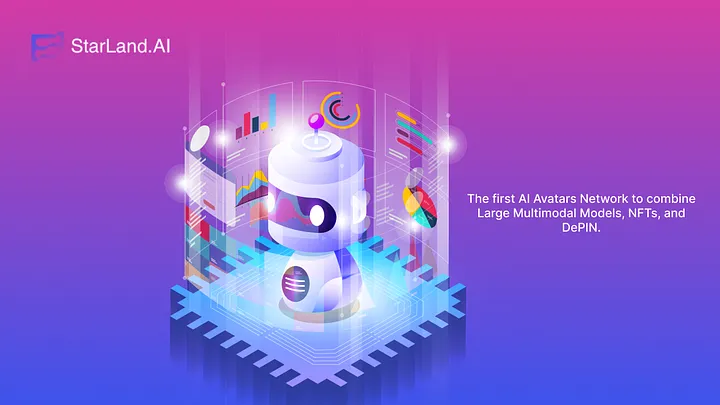ReAct Prompting: How we prompt for AI Avatars on StarLandAI

Prompt engineering involves exploring methods to enhance the effectiveness and precision of outputs produced by large language models (LLMs). Some techniques, such as chain-of-thought prompting, have empowered prompt engineers to refine the quality of their outputs significantly. In this discussion, we look at an additional technique known as ReAct prompting, which aids in guiding LLMs towards achieving the desired output more effectively and deepens their comprehension of the given prompt instructions.
What Is ReAct Prompting?
ReAct is a method for prompting and processing responses in large language models (LLMs) that combines reasoning, action planning, and the assimilation of various knowledge sources. This approach encourages LLMs to extend beyond their intrinsic capabilities, utilizing real-world information to inform their predictions. Essentially, ReAct combines the processes of thinking and executing actions.
Why did StarLandAI choose ReAct Prompting?
On StarLandAI, we empower users to configure and create custom Avatars by engaging in dialogue with our official AI Agent. In this process, the Agent’s ultimate goal is to assist users in completing the creation and configuration of their Avatars. To achieve this goal, a variety of sub-steps are required, such as obtaining the Avatars’ basic descriptions from users, configuring the Avatars’ voices, generating the Avatars’ visual appearance and so on. ReAct’s approach to reasoning and action planning is a natural fit for our needs. Through reasoning, the Agent can contemplate what steps remain to complete the configuration of the Avatars. It then uses action planning to devise a plan for the next step. Upon completion of an action associated with a step, the reasoning process repeats until the configuration of the Avatars is finalized.
How does StarLandAI utilize ReAct?
StarLandAI implements ReAct prompting for the workflow of the configuration of the Avatars. It contains reasoning, decision making, action planning, and observation.
The prompt of ReAct should contain four key elements:
- Main instruction: Main instruction is important. It’s goals is to initiate the model’s comprehension of our desired outcomes.
- ReAct steps: Outline the steps for reasoning and action planning. We use “thought, action, and observation” as the steps in our prompt.
- Reasoning: A chain-of-thought like “Let’s think about this step by step” is used to enable reasoning. Some examples of how to tie the reason to actions are also added.
- Actions: The set of actions from which the model can choose one after reasoning.
Therefore, our Main instruction is to assist users in completing the configuration of their Avatars, and we have incorporated all the necessary information and steps for configuring Avatars into our prompt. Within these steps, the required actions to be invoked, including: asking users questions, summarizing and extracting Avatar configuration information, automatically optimizing Avatar configurations, acquiring voices, generating Avatar images, etc., are also integrated into our prompt.
ReAct prompting not only organizes the conversation but also maintains a high level of engagement and interactivity with the user. The feedback loop created by ReAct prompting allows the AI Agent to continuously learn from each interaction, refining its approach to better suit the user’s requirements. This interactivity is especially crucial as it helps in creating a more personalized Avatar that truly represents the user’s preferences.
The Future of ReAct Prompting on StarLandAI
The future of ReAct prompting on StarLandAI looks promising. By consistently applying this technique, StarLandAI will continue to improve the user experience, giving rise to a more intuitive and user-friendly platform for Avatar customization.
Ultimately, the conclusion of our journey in Avatar creation is not merely a technological accomplishment but a testament to the seamless partnership between human imagination and AI assistance. StarLandAI aims to lead this paradigm shift, creating a future where every user can see a reflection of their unique identity in their digital counterpart, thanks to the innovative power of ReAct prompting.
